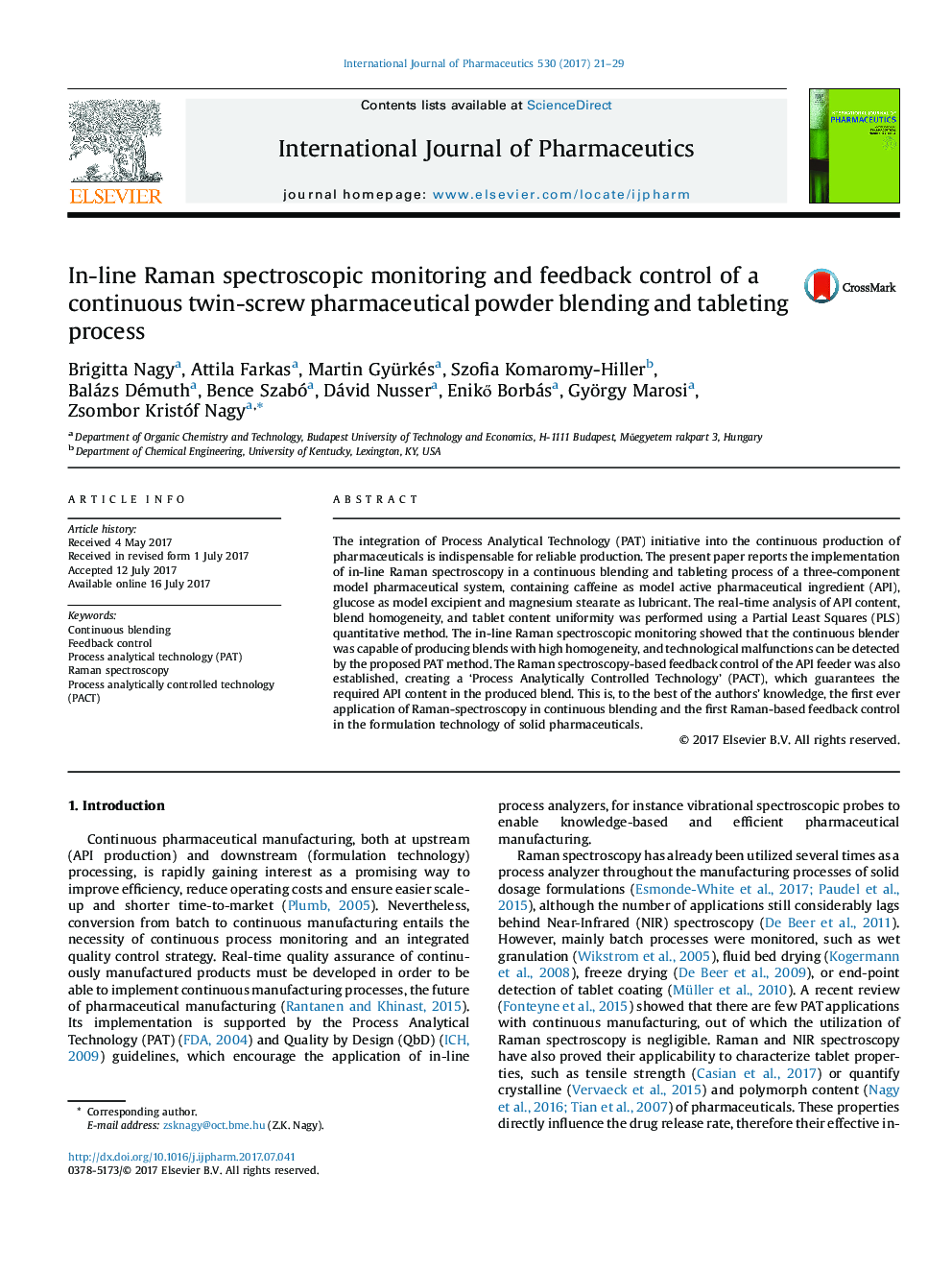| Article ID | Journal | Published Year | Pages | File Type |
|---|---|---|---|---|
| 5550104 | International Journal of Pharmaceutics | 2017 | 9 Pages |
The integration of Process Analytical Technology (PAT) initiative into the continuous production of pharmaceuticals is indispensable for reliable production. The present paper reports the implementation of in-line Raman spectroscopy in a continuous blending and tableting process of a three-component model pharmaceutical system, containing caffeine as model active pharmaceutical ingredient (API), glucose as model excipient and magnesium stearate as lubricant. The real-time analysis of API content, blend homogeneity, and tablet content uniformity was performed using a Partial Least Squares (PLS) quantitative method. The in-line Raman spectroscopic monitoring showed that the continuous blender was capable of producing blends with high homogeneity, and technological malfunctions can be detected by the proposed PAT method. The Raman spectroscopy-based feedback control of the API feeder was also established, creating a 'Process Analytically Controlled Technology' (PACT), which guarantees the required API content in the produced blend. This is, to the best of the authors' knowledge, the first ever application of Raman-spectroscopy in continuous blending and the first Raman-based feedback control in the formulation technology of solid pharmaceuticals.
Graphical abstractDownload high-res image (170KB)Download full-size image
